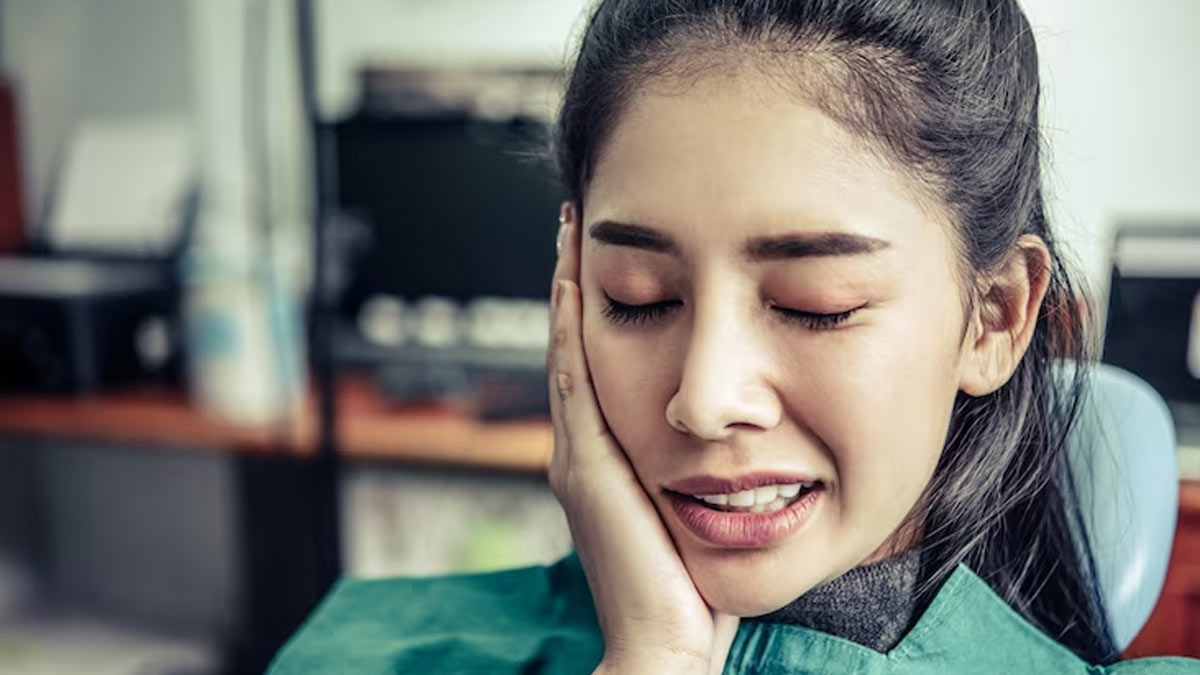
One of the most common dental treatments individuals undergo to fix cavities and restore damaged teeth is tooth fillings. This is because, when left untreated, cavities can lead to many problems, including excruciating pain and discomfort. But is it common to experience dental pain after your dental filling? On World Oral Health Day 2023, we talked to Dr Nihal Yadav, BDS (PGI Rohtak), Amayra Dental Clinic, Kaushik Enclave, Burari, Delhi, and a former resident at Deen Dayal Hospital, Hari Nagar, to know to answer.
Table of Content:-
Pain After Dental Filling: What Dentist Says
While talking to OnlyMyHealth, Dr Yadav said that although dental fillings are generally successful, some individuals may experience dental pain after the filling procedure.
Reasons for Tooth Pain After Dental Filling
Dr Yadav explained that there could be several reasons for this discomfort.
Expansion of Filling Material

One reason for dental pain after filling is the expansion of the filling material. Dr Yadav stated, "The material we use in the dental filling – whether it is Glass Ionomer Cement (GIC) or composite resin – can expand or contract with temperature changes. Therefore, if an individual eats or drinks something hot or cold after the filling procedure, the filling material may expand or contract, causing discomfort or pain. In most cases, this type of pain is temporary and will reduce or subside within a few days of the treatment."
Also Read: What Are Dental Crowns & Bridges, Expert Weighs In
High Points on the Filling
Another cause of dental pain after filling is high points on the filling. If the filling material is not properly smoothed or polished after the procedure, it may result in high points or rough edges that irritate the surrounding teeth and gums. This irritation can cause pain, discomfort and trauma on occlusion that may last for a few days. Dr Yadav mentioned that high points are rare as the dentist asks patients if they can occlude their teeth properly. In such cases, the dentist may need to adjust the filling by smoothing out any rough edges.
Sensitivity After Filling
Other causes of dental pain after filling may include sensitivity that can occur when the dentist treats the cavity. Dr Yadav stated that sometimes dentin is exposed while reducing the teeth to treat the cavity, which is completely normal. This sensitivity subsides after a few days of the procedure.
Overhanging Filling

Overhanging filling can also cause dental pain after filling. If the filling material extends beyond the cavity, it can irritate the surrounding teeth and gums, resulting in pain and discomfort. This type of pain is also temporary and can be easily resolved by the dentist by adjusting the filling.
Minimise the Risk of Tooth Pain after Filling
To minimise the risk of dental pain after filling, it is essential to practice good oral hygiene, including regular brushing and flossing. Additionally, avoiding eating or drinking hot or cold foods and beverages immediately after the filling procedure is essential. Waiting until the anaesthetic wears off completely before eating or drinking anything is recommended.
Also Read: How To Treat Toothache In Absence Of Immediate Dental Care, Expert Weighs In
Bottomline
Dental pain after filling is a relatively common occurrence, and there can be several reasons for this discomfort. The expansion of the filling material, high points on the filling, and overhanging filling are some of the causes of dental pain after filling. While the pain is usually temporary and can be easily resolved by the dentist, it is essential to consult with your dentist to determine the underlying cause of the pain and develop an appropriate treatment plan.
Image Credits: freepik
Also watch this video
How we keep this article up to date:
We work with experts and keep a close eye on the latest in health and wellness. Whenever there is a new research or helpful information, we update our articles with accurate and useful advice.
Current Version